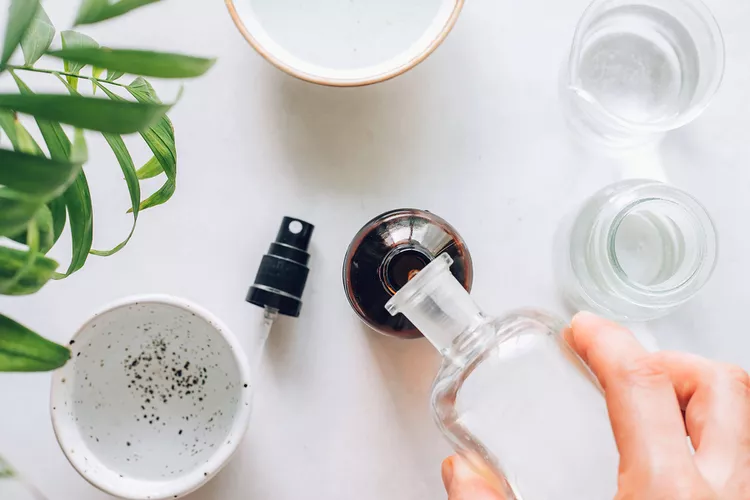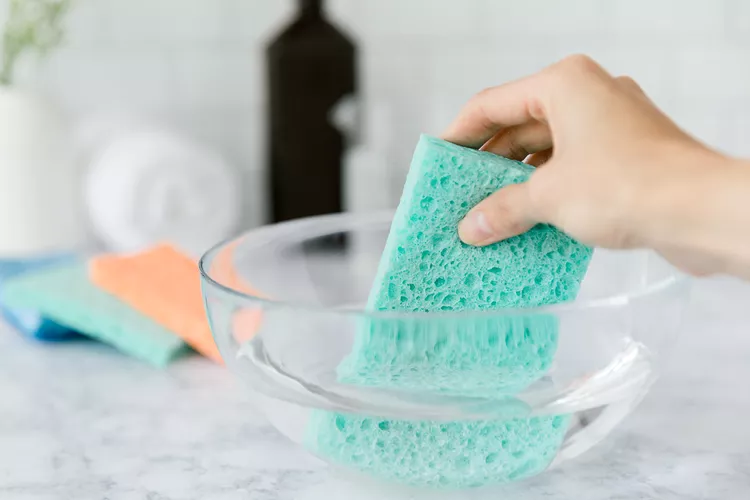Hydrogen peroxide is most often found in the bathroom medicine cabinet but this mild disinfectant and bleaching agent works equally as well in the kitchen to sanitize surfaces and clean away grime.
Learn more about why you should have a bottle of hydrogen peroxide with your cleaning supplies.
How Peroxide Cleans Your Kitchen

Hydrogen peroxide is an antiseptic that kills germs and bacteria on hard surfaces. It also works as an oxidizing agent to lift hard-to-remove stains. It contains natural elements, and when hydrogen peroxide is exposed to sunlight it breaks down into plain water.
You can use hydrogen peroxide in the kitchen to clean:
- All types of countertops
- Doorknobs, cabinets, and drawer hardware
- Appliance handles and touchscreens
- Cooktops
- Refrigerator and freezer interiors
- Dishwasher interiors
- Kitchen sinks
- Dishes and cookware
- Cutting boards
- Floors
- Garbage cans
How to Use Hydrogen Peroxide to Clean the Kitchen
The first-aid strength solution (3%) works well for kitchen cleaning.
It is most effective when the bottle is freshly opened but will still provide cleaning and disinfecting qualities for about six months. An unopened bottle of hydrogen peroxide has a shelf life of around one year.
To test if your bottle is still an effective disinfecting agent, pour a small amount into a glass bowl. If it fizzes, you’re ready to go. No fizz? Buy a new bottle.
Countertops, Hardware, and Appliances
- Attach a spray nozzle. Hydrogen peroxide is highly light-sensitive, which is why it is sold in dark containers. To make cleaning easier, simply attach a spray nozzle to the top of the bottle.
- Lightly mist surfaces. Spray the area you wish to clean with a light mist of hydrogen peroxide.
- Let it work. Allow the hydrogen peroxide to work for at least 5 to 7 minutes to begin breaking down bacteria and grime.
- Dry the surface. Wipe the surface with a dry microfiber cloth.
Kitchen Sinks and Stuck-on Countertop Grime
- Mist the surface. Lightly spray on some hydrogen peroxide.
- Add baking soda. Sprinkle some dry baking soda on the wet surface.
- Scrub and rinse. Use a microfiber cloth or sponge to scrub the grimy area. The baking soda acts as a gentle abrasive. Rinse the surface well once the mess is removed.
Floors and Garbage Cans
In a bowl or bucket, mix a solution of one part water and one part hydrogen peroxide. With this solution:
- Mop floors. Use a microfiber mop to clean floors. There is no need to rinse, but avoid leaving standing water on laminate or LVT floors. Allow to air dry.
- Freshen garbage cans. Use the water and hydrogen peroxide solution to rinse out smelly garbage cans.
Cutting Boards, Dishes, and Cookware
- Cutting boards: To disinfect cutting boards, including wooden boards, lightly spray the surfaces. Let the hydrogen peroxide work for 10 minutes and then rinse well with water. Allow the boards to air dry or use a clean microfiber cloth.
- Cookware: Spray the cookware with hydrogen peroxide and sprinkle with baking soda to remove stuck-on food. Scrub with a sponge and rinse well.
- Dishes: Wash the dishes to remove food particles. To sanitize the dishes, spray with hydrogen peroxide and wait 10 minutes before rinsing.

